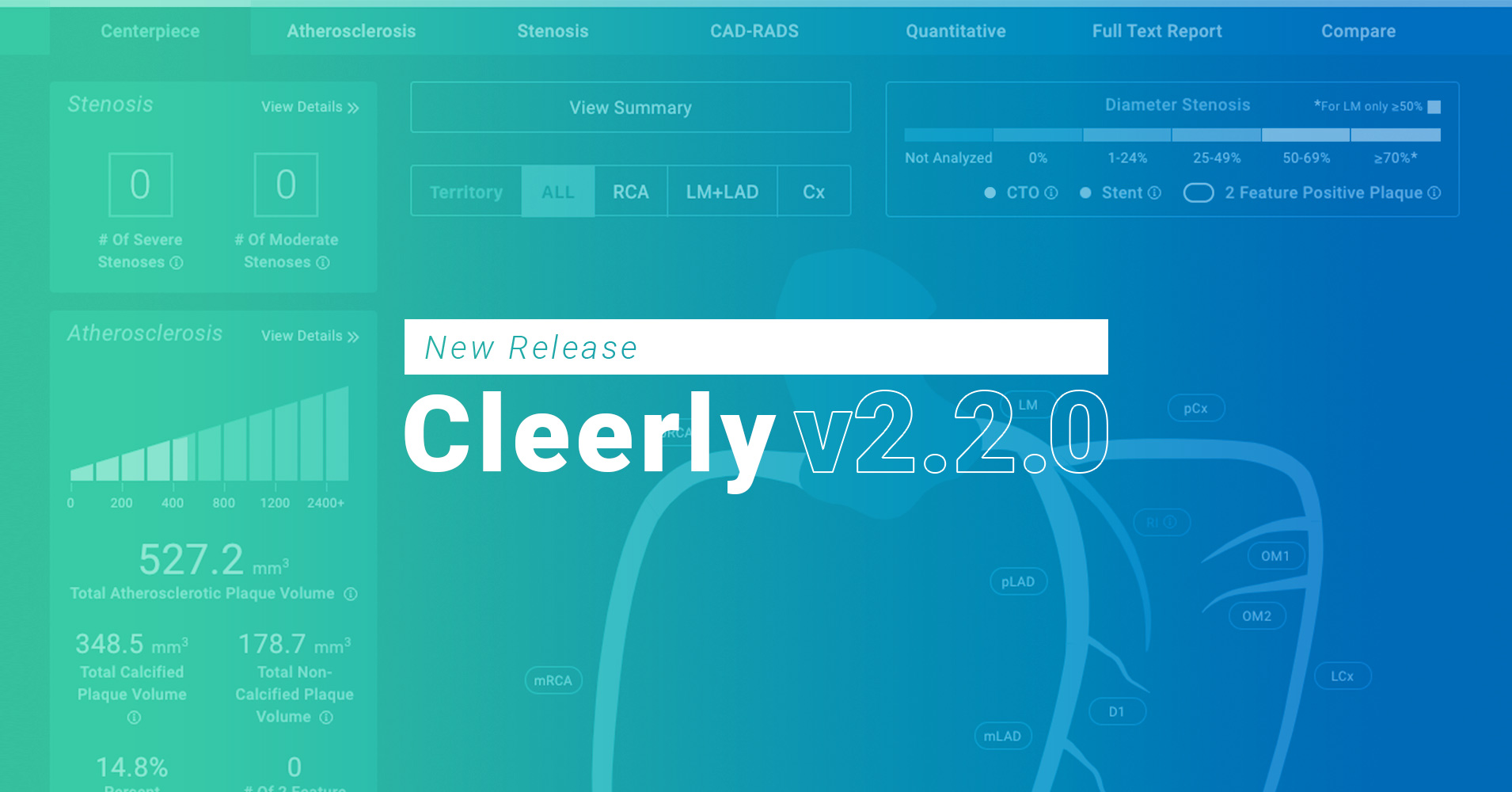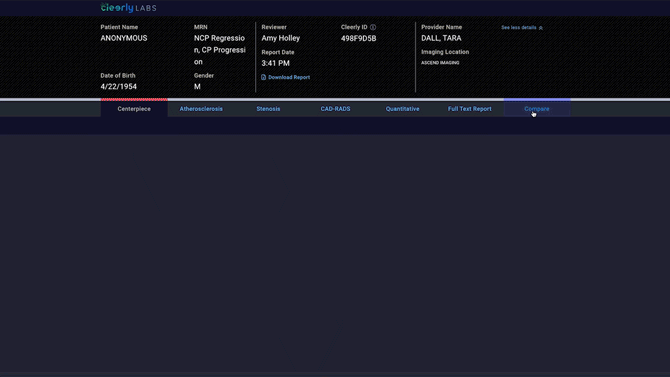The Recipe to a Healthy Heart:Your Guide to Preventing Heart Disease
Sure, the taste of food is important, but do you know how your diet impacts your heart? Many foods contain hidden ingredients that negatively impact...
2 min read
 Cleerly
:
February 8, 2022
Cleerly
:
February 8, 2022

As Cleerly makes its way into the clinical workflow of health systems and providers across the US, we are learning valuable information about how to drive new efficiencies and deliver new insights to our customers.
American Heart Month has arrived and we’re taking the opportunity to introduce several innovations that up the ante in precision heart care.
Cleerly’s latest product release included many user experience refinements in addition to three high-value tools to explore. We invite you to check out a video demonstration of these features from Cleerly’s Chief Medical Officer, Jay Earls, MD to learn more.
Cleerly 2.2.0 allows users to:
In past versions, plaque volume was represented by the total volume in millimeters cubed - which may be difficult for most people to quickly visualize. We’ve taken the guesswork out of disease quantification by also representing it with a percentage of vessel volume. Cleerly’s Percent Atheroma Volume (PAV) quantifies the amount of plaque as a percentage of the total vessel volume, making it easier for patients (and physicians alike) to understand disease amount.
PAV represents the percentage of the vessel that is full of plaque. To arrive at this number, absolute plaque volume is divided by the total volume of all of the epicardial coronary arteries. This feature also helps normalize the measurement of plaque between women and men, as women often have smaller arteries than men.

Cleerly’s new first-of-its-kind comparison tool tracks patient disease by the amount and type of atherosclerosis (plaque) rather than surrogate tracking over time, as is the case in many clinical environments today. This tool will be paramount in helping evaluate a patient’s disease progression and the efficacy of treatment. If a patient has a prior study which has undergone a Cleerly analysis, we can compare the two studies side-by-side, making it easy to see whether plaque has remained stable, regressed, or progressed between the two time points.
Comparisons may be made by looking at all coronary vessel measurements combined in a per patient basis or individually on a per vessel basis, or even a per plaque basis according to the viewing preferences of the interpreting physician. Users can also view the comparison in terms of total plaque volume or percentage of atheroma volume (PAV) according to their preference for quantifying disease.
Finally, this new tool also indicates whether plaque is calcium dominant or non-calcium dominant, which is valuable in understanding whether the patient is increasing in more dangerous fatty plaque or effectively converting fatty plaque to more stable, calcified plaque with therapy.

Finally, if you’re an Ambra image sharing customer, this one’s for you. Cleerly’s new version of Ambra Workflow Optimization enhances the automation of study transfers by re-routing traffic appropriately if uploads are paused for any reason. This new mechanism will allow for seamless data transfer and timely processing for each exam.

With increased use of our technology comes valuable new insights and discoveries that inform future innovation. At Cleerly, we are eager to have customers engage with us and share feedback so we can continuously deliver the most valuable tool in your cardiac care program.
Ready to get started?
Request a Demo of Cleerly

Sure, the taste of food is important, but do you know how your diet impacts your heart? Many foods contain hidden ingredients that negatively impact...

As we reach the end of 2023 and yet another remarkable year at Cleerly, it’s a great opportunity to reflect on all we’ve accomplished and begin...

Cleerly has had a busy few months – attending conferences, panel sessions, and winning awards as we all work together to achieve our mission of a...

Findings from Cleerly's groundbreaking echo the recent American College of Cardiology guidelines on the use of CCTA for non-invasive heart disease...

There's a little-known fact in cardiology: Most of the care that's provided doesn't prevent heart attacks.

Cleerly CEO James Min, M.D., is a guest on the latest episode of the AWS Health Innovation Podcast hosted by Joe Shonkwiler, M.D.